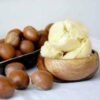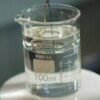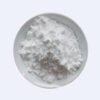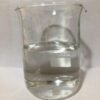Cosmetic raw materials serve as the foundation for any cosmetic product.
The cosmetics industry is a multibillion-dollar sector that mainly relies on the utilization of diverse raw materials to manufacture various products.
Cosmetic raw materials are substances used to make cosmetic formulations such as lotions, creams, cosmetics, and skincare items.
Anyone wishing to formulate high-quality cosmetic goods should be familiar with the many kinds of cosmetic raw ingredients.
Functional Ingredients
Any cosmetic formulation relies on functional ingredients as its foundation. They are necessary for a product to work.
Depending on the kind of product one is attempting to formulate, functional ingredients are selected.
The number of functional ingredients that are present in a product will vary depending on the desired result.
Here are some examples of functional ingredients:
- Water: The most prevalent functional ingredient in cosmetic formulations is water. Many cosmetic products use it as a foundation.
- Thickeners: Thickeners are used to improve a product’s viscosity, making it simpler to apply and giving it a more luscious texture. Carbomers and xanthan gum are two examples of thickeners.
- Emollients: Emollients are skin moisturizers and softeners. They form a protective barrier on the skin, preventing moisture loss. Shea butter and jojoba oil are examples of emollients.
- Surfactants: Surfactants are used in cleansing products to create lather. They also aid in the emulsification of oil and water-based substances. Surfactants such as sodium lauryl sulfate and cocamidopropyl betaine are examples of surfactants.
Structural Ingredients
A product’s structure is provided by structural ingredients. They contribute to a product’s texture and consistency.
Examples of structural ingredients are as follows:
- Viscosity modifiers: are ingredients that alter the viscosity of a product. They can be used to thicken or thin a product depending on the intended result. Gums, cetyl alcohol, stearic acid, and carnauba wax are examples of viscosity modifiers.
- Film formers: These ingredients are used to generate a protective barrier on the skin. They aid to keep the skin moisturized by preventing moisture loss. Acrylates and polymers are examples of film formers.
Supportive Ingredients
To increase stability, supportive ingredients are included in cosmetic formulations. They aid in maintaining a product’s integrity and keep it from degrading.
Examples of supportive ingredients include:
- Preservatives: Preservatives are used in cosmetic formulations to prevent the growth of bacteria and fungi. They help in the extension of a product’s shelf life. Preservatives such as phenoxyethanol and parabens are examples of preservatives.
- Acids: are used to reduce the pH of a substance. They contribute to the formation of an acidic environment that is unfriendly to bacteria and fungi. Citric acid and lactic acid are two examples of acids.
- Bases: are used to increase the pH of a substance. They contribute to the formation of an alkaline environment that is unfriendly to bacteria and fungi. Potassium hydroxide and sodium hydroxide are two examples of bases.
Added Extras
To appeal to the target market, cosmetic formulations often include extras.
They don’t have any functional structure and are only added in modest amounts.
Examples of added extras include:
- Extracts: are used to tell the brand’s story. They are added to a product to create a distinguishing feature. Green tea extract and aloe vera extract are two examples of extracts.
- Fragrances: Fragrances are used to give a product a nice fragrance. They contribute to the product’s sensory appeal, making it more appealing to consumers. Fragrances can be generated from natural or synthetic sources, and they are normally used sparingly.
- Preservatives: Preservatives are added to cosmetic formulations to prevent microbial growth and increase the product’s shelf life. Parabens, formaldehyde releasers, and benzyl alcohol are common preservatives used in cosmetic items.
- Acids and bases: are ingredients that are used to change the pH of a product. The pH of a cosmetic product is crucial since it can alter the product’s stability and efficacy. Acidic products, for example, are better for exfoliating and treating acne, whilst alkaline ones are better for hydrating and curing dry skin. Citric acid and lactic acid are prominent acids included in cosmetic products, while sodium hydroxide and triethanolamine are popular bases.
It is important to remember that some cosmetic products may fall into more than one category. A tinted moisturizer, for example, can be both a skincare cosmetic and a decorative cosmetic because it gives moisture as well as a sheer tint of color to the skin.
Finally, the cosmetic industry is always evolving, with new trends, ingredients, and technology emerging on a regular basis. In order to make high-quality, effective, and safe products, cosmetic formulators and manufacturers must keep up with these changes and comprehend the various categories of cosmetic raw ingredients.
Cosmetic formulators can design products that fulfill the demands and preferences of consumers while conforming to industry norms and standards by carefully selecting functional, structural, supporting, and added extra ingredients.
Furthermore, formulators can more efficiently build and change formulations to attain desired product qualities if they understand the various types of cosmetic constituents.
Ultimately, the beauty industry plays an important part in our daily lives by supplying items that improve our looks, our health, and well-being, and make us feel more confident and self-assured.
Cosmetic formulators and manufacturers can continue to promote innovation and advancement in this essential industry with careful consideration and attention to detail.
Selecting the right ingredients is crucial in the cosmetic industry. The ingredients of a product can influence its effectiveness and safety.
As previously stated, there are various types of cosmetic raw materials, each providing a distinct purpose.
As a result, it is important to understand the purpose of each ingredient and choose the best ones for your product.
When the wrong ingredients are used, they can cause skin irritation, dryness, and even allergic responses. This can result in consumer distrust and harm to the brand’s reputation.
On the other hand, choosing the correct ingredients can produce superior and productive goods that satisfy consumer wants and preferences.
Customers are looking for natural and sustainable solutions as they become more conscious of the ingredients in the products they purchase.
Brands can stand out from competitors and appeal to a rising consumer group by adopting natural and sustainable ingredients.
We hope this article has given you some helpful insights into the many types of cosmetic raw materials and their significance in the creation of cosmetic products.
We urge you to keep up with the latest trends and innovations in the cosmetic industry and to always prioritize the safety and effectiveness of your products.
For quality raw materials for your skin and hair care product formulation, kindly click HERE to shop for your raw material.
Please leave a comment if you would like to share any experiences or insights. We would be delighted to hear from you and carry on the discussion.




